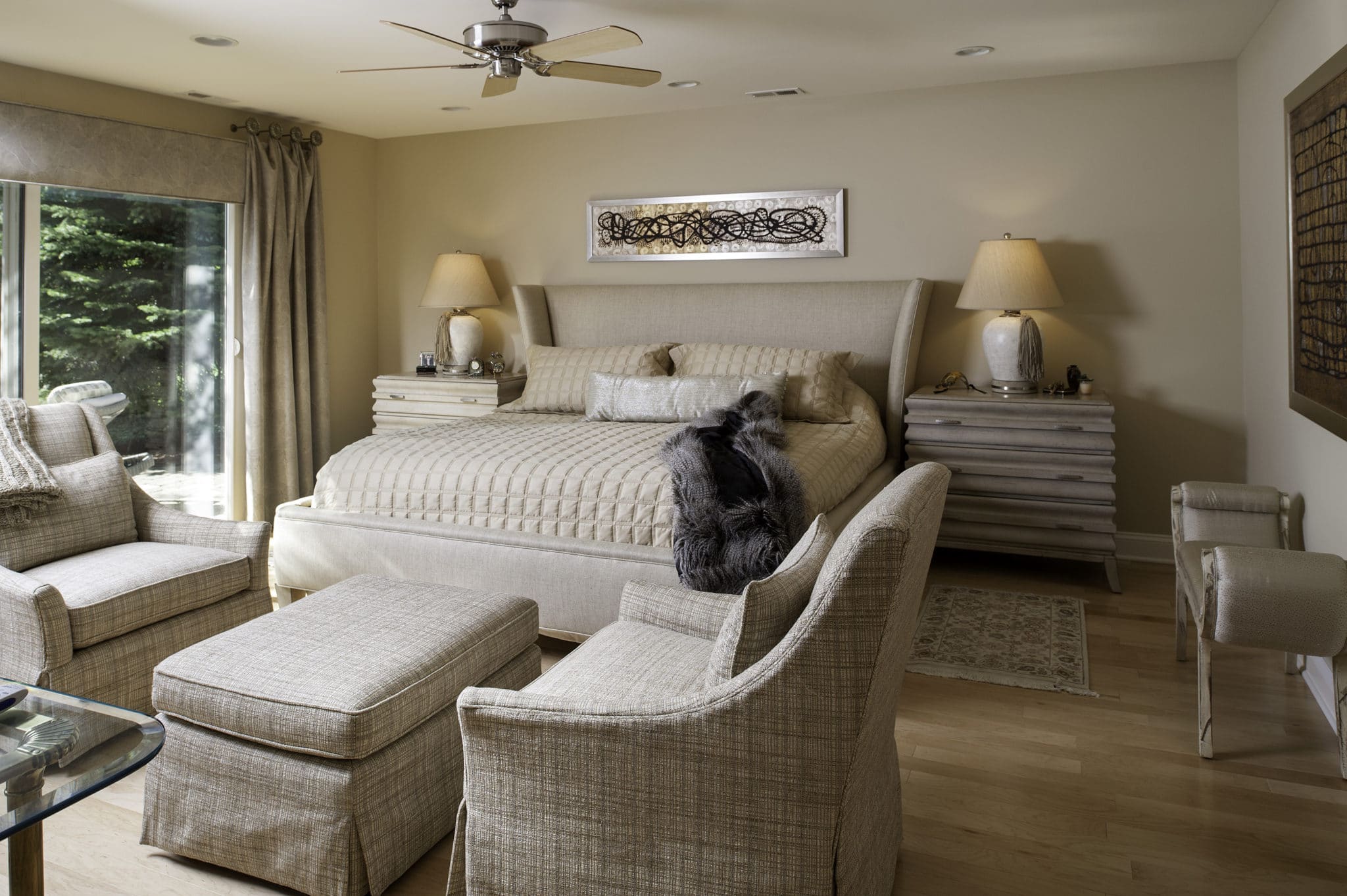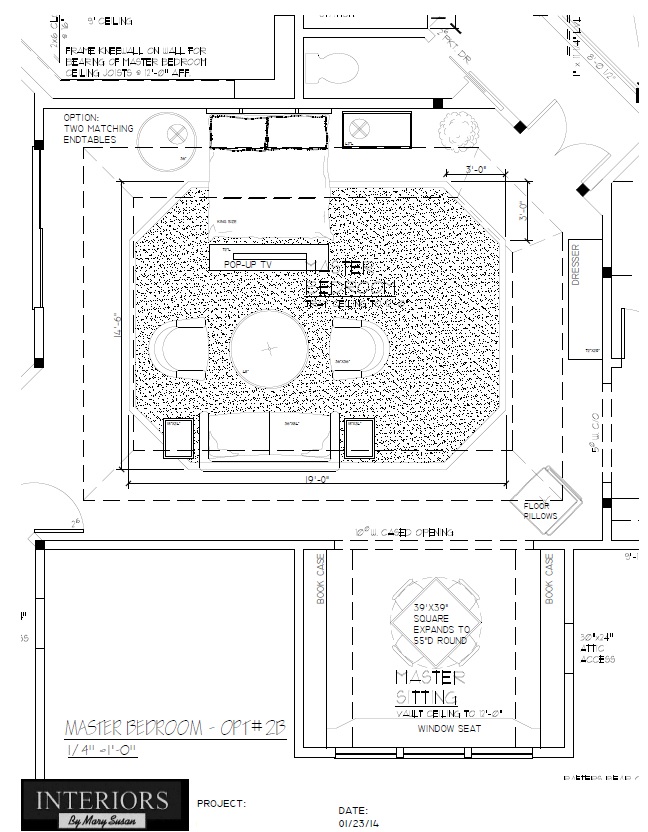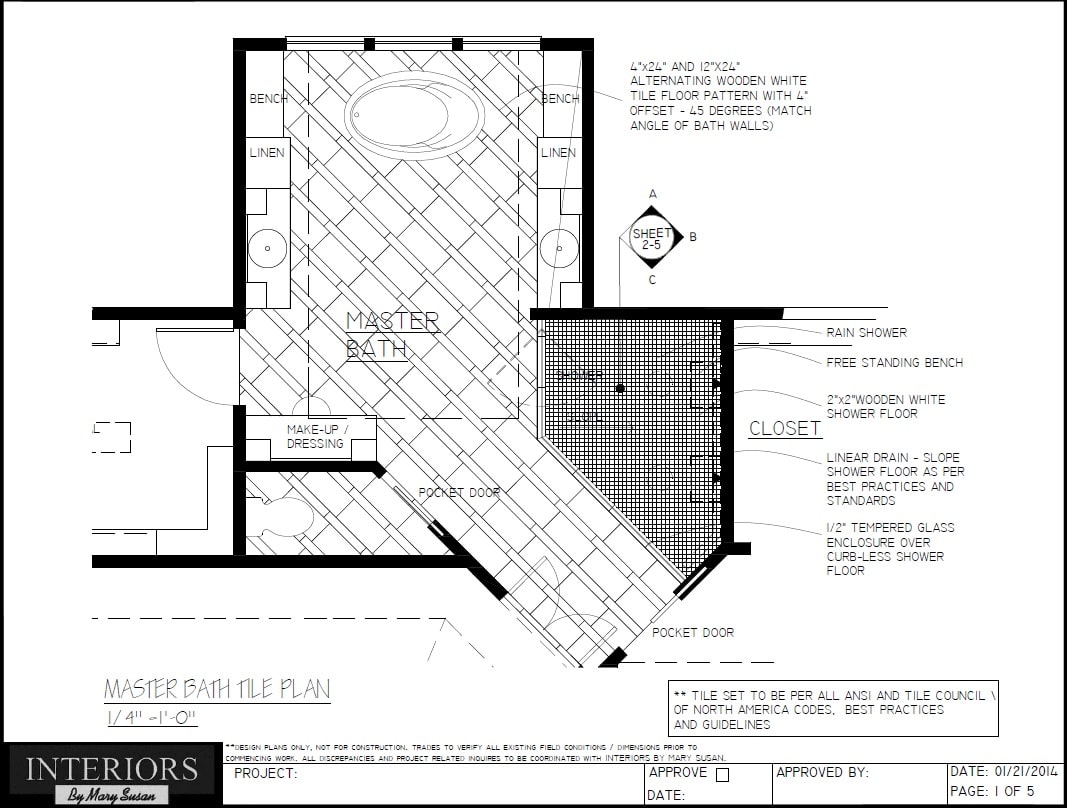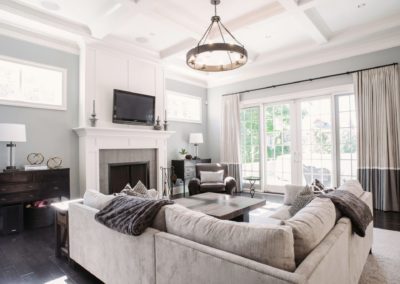While none of the conditions I mentioned above will change overnight, there is something you can do to create a relaxing space within your own home each and every day: design a master suite that’s uniquely yours. I’m not going to talk about color palettes, fabrics, accessories or other selections; I’ll leave that to the interior designers. I’m approaching this topic from the perspective of what I’ve successfully built and renovated as part of a collaborative effort for clients in the suburban Chicagoland area.

A beautiful master suite can be designed in smaller ranch homes, too. This is a Hinsdale, IL bedroom designed by Mary Susan Bicicchi, ASID, principal of Interiors by Mary Susan.
Essentials of a Master Suite Design
A master suite — or master bedroom — can be designed and built in any type/style of new construction, or can be created to your specifications in a custom renovation in your existing home. The master suite is your own private, restful retreat, so it should be designed to fit your needs and lifestyle, not those of the “next homeowner.”
A typical master suite consists of the following, though all elements are dependent upon space:
- Sleeping area
- Sitting area
- Spacious walk-in closets (including a dressing foyer and laundry area if space allows)
- Master bath with private shower (preferably curbless), spa tub and dual vanities
- Private balcony or deck to access the outdoors
Master Suite Layout
Whether this is your first or fifth venture into home-building or house-hunting, there’s something that either feels exactly right or completely off upon first entering a home or seeing its plans on paper: the layout. The layout makes or breaks a space, so I’m going to address the keys to a sensible, functional layout for a master suite, and of course everything depends upon the size of the home and designated area. This is a big decision; any layout you’re considering should be reviewed by and discussed with an interior designer working with you and your general contractor.
As a design/build firm, we use a collaborative approach where the entire team is assembled from the beginning: the homeowner, general contractor, architect and interior designer are working in concert from the onset. It makes no sense to me (and it shouldn’t to you, either) to bring on board any one of these critical components at a later stage of the project. That’s a recipe for disaster. Whether you’re re-designing a master suite in Oak Brook or building a new home in Winnetka, your entire design/build team should be cohesive and brainstorm together from the very beginning.

This master suite layout is provided courtesy of Mary Susan Bicicchi, ASID, principal of Interiors by Mary Susan.

This master bath layout is provided courtesy of Mary Susan Bicicchi, ASID, principal of Interiors by Mary Susan.
Eight Steps to create a good master suite layout
The most important issue in layout is the flow from zone to zone, and critical to that are the paths that take you to and from each zone. You’ll need to think about unobstructed access to your bathroom, closet(s) and door(s) as it relates to your bed.
1. Determine location of bed first. Because this is the largest feature in your master suite, determine where this will be placed first. You want to make sure your bed is accessible to all doors and the bathroom with no obstructions. Any furniture next to your bed (night stands/tables) should be planned/specified early, too. You can go the traditional route and place it against the wall opposite the main door, or angle it for a unique look.
2. Determine location of television and additional furniture next. After the bed location has been chosen, consider the placement of additional furniture pieces (dressers, armoire, etc.). Naturally, the placement of the (optional) TV should be placed directly across from the bed or within view from the sitting area, perhaps above the fireplace if there is one in the suite.
3. Determine architectural focal point and call attention to it. A good interior designer will immediately know the “focal point” of each room, which is the area that first draws your attention. Is it a fireplace? Is it a large, dramatic window? Perhaps a custom-designed bookcase or other built-in feature? Devote special attention to this focal point because — chances are — you’re going to use it often. You should “feel good” when you’re here. Remember: this space is your personal oasis to sneak away to every night.
4. Evaluate how the sitting area will be used.
Are you a reader? Do you prefer a comfy chair or your bed when reading? Will your sitting area be used exclusively for reading or perhaps for Sudoku, crossword puzzles, table puzzles and working on your upcoming best-selling novel, too? Maybe you want your sitting area to double as a dressing area while your spouse is still sleeping. Will you and your spouse be using the sitting area simultaneously? If so, allow enough space for the right furniture to be placed, as well as ample electrical outlets and light fixtures.
5. Design spacious, his-and-hers walk-in closets with a dressing foyer. Closets aren’t made solely for storing clothes, shoes, accessories or jewelry anymore. They can also double as a preparation area and dressing area. When designing this space, leave ample room for a bench or other type of seating, an additional dresser, jewelry chest/organizer, tie and belt racks/drawers (or alternate storage advices). Many homeowners also opt for a devoted
(second) laundry area as part of their closet space, as well as a steamer and ironing station. You may also consider special ventilation for your closets to protect designer suits and other valuables.
6. Design a master bath with private shower (preferably curbless), spa tub and dual vanities. Designing a master bath is a huge topic, which I can blog about for hours. I’ll devote more time to bath design at a later date, but for now, take away these key points. Place the location of the master bath at the far end of the suite if only you and your spouse plan to use it. If others need access (which really defeats the whole idea), place the bath near the entrance
of the suite. I’ll reiterate my message again about ensuring the path to the bathroom is unencumbered for those trips in the middle of the night.
Secondly, I’m a huge fan of curbless showers. My team and I have used the Schluter waterproofing and gutter-drain shower system in several of our clients’ homes, and they’ve worked out great. I hope you’re always in good health, but in the event that you’re unable to step into a shower as you get older or develop a physical ailment, curbless showers provide
easy access and are wheelchair-accessible. Plan for the future!
7. Private balcony or deck to access the outdoors. The flow is significant here – sound
familiar? If you want your master suite to include a private balcony or deck to enjoy coffee, tea or wine, ensure that you can move about easily from door to door. Be prudent about your decking material choice and keep the space simple. Check out my blog about decking options if you have a minute.
8. Design a Good Lighting Plan: This is a blog topic unto itself because it is so important! To avoid eye strain or using the incorrect type of lighting for different areas of your master suite, a lighting designer should be a part of your design/build team. You might opt for a chandelier in your dressing foyer, table lamps on your nightstands, a floor lamp or task-lighting in your sitting area, overhead (can) lights for general use and special vanity lights in your master bath. Nothing should be selected without the input from your contractor and lighting designer.

There are a multitude of details and ideas I can go into for each of these eight steps. My objective here is to start you off and get you thinking about the essentials of a solid master suite design plan. Call or email me with questions and comments.



